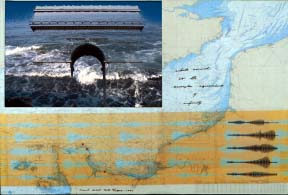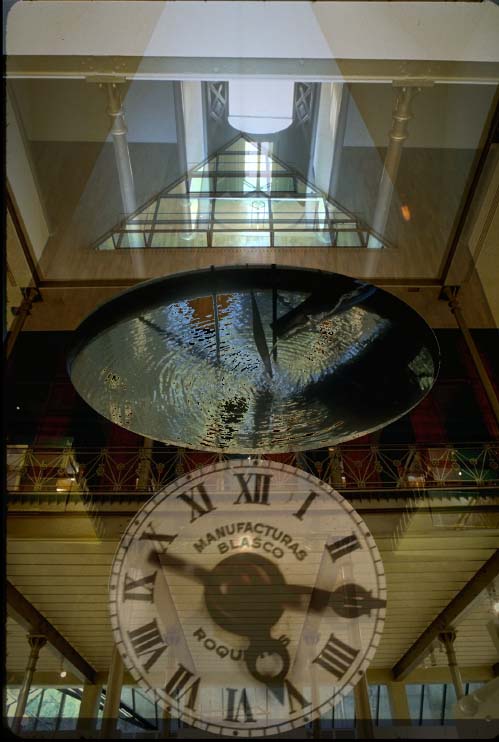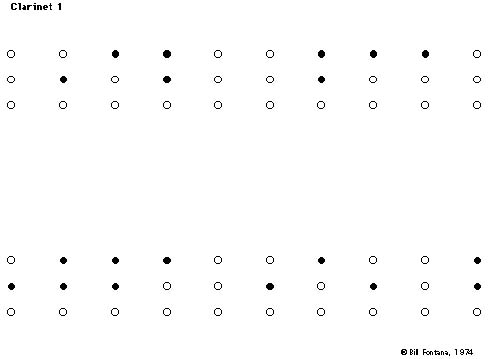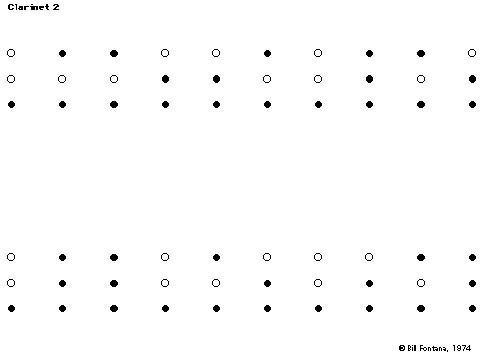|
2. Musical Sculpture for English Handbells,
1974. In this work, performers, widely distributed in a space, perform on
a set of English handbells. Each player has a different random number sequence
that gives
him durations of silence in between during which he rings his bell once
until it becomes fully silent. This simple system produces complex and changing
spatial patterns. The ending of the piece is ambiguous as larger bells always
finish last. Thus, at the end, one bell may still be counting silences and
occasionally ringing, and neither the other players, or the audience members,
can determine if the piece is finished except by waiting and listening.
3. Piano Sculpture, 1978. In this work,
the performers play a repetitive, 84-note, four-octave melody on four spatially
distributed pianos. Fontana composed the notes entirely from the overtones
of bells, reflecting his interest in change ringing. As the changing spatial
patterns travel in the space and echo one another, they create an imaginary
landscape. Piano Sculpture, like Musical Sculpture for English Handbells,
uses musical language to mimic processes within the natural world.
4. Pipe Phase, 1978. Like Phantom Clarinets,
this piece deals with physics of sound.. Its components include a player
striking a 4.5 meter-long, suspended aluminum rod in a repetitive, rhythmic
pulse, and four performers, holding a microphone in each hand, in continuous
motion around the sound field of the vibrating rod. Each microphone "hears"
or picks the different frequencies and harmonics in the room that are caused
by the presence of the rod. The piece is, then, an exploration of space.
Fontana created Pipe Phase during his residency at The Royal Melbourne Institute
of Technology, Australia
.
5. Musical Sculptures for Carillon, 1988.
These, Fontana's last musical sculptures, lead directly into his later installations.
Conceived and realized for the carillon the UC Berkeley campus, these works
could be
recreated on any campus with a carillon or at any site with proximity
to a carillon. The musical patterns Fontana composed for the carillon are
similar to those of Piano Sculpture. |
|



